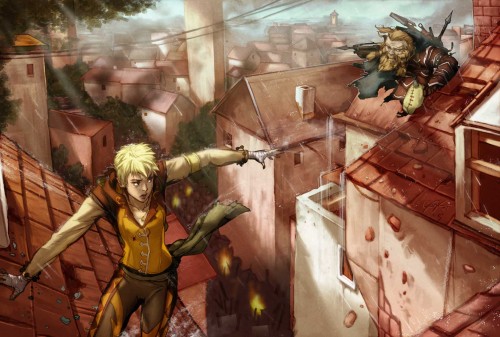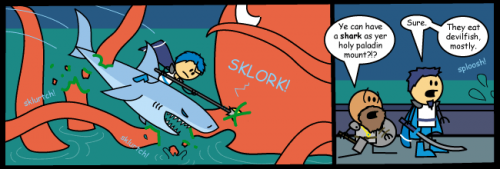
Sorry, this isn’t about mamma cooking breakfast with no hog (today was a good day). I just didn’t want to completely monopolize kcmeesha’s comment section.
There has been a lot of talk going back and forth about the American Recovery and Reinvestment Act of 2009 (aka “the stimulus bill”). On paper, having a public discussion of a bill before our representatives and senators vote on it is a good thing. A great thing. Precisely what the founding fathers were hoping would happen. Well, most of them (but that would be a subject for another time).
Alas, the quality of the public discussion has been exceedingly poor. Rather than actually hashing out what the mix and nature of tax cuts and government spending will be, we instead hear about honeybee insurance and tennis courts. This serves the double purpose of making the bill look wasteful and corrupt to anybody predisposed to think everything the government does is bad while making fiscal conservatives look small and mean.
So we get references to Chuck Schumer talking about the “chattering class” as though that were somehow incriminating. The “chattering class” would be people who make their living by chattering. The professionally-outraged. Just like the “working class” makes their living by working and the “investing class” make their living through investments. If you were Nancy Grace or Kieth Olbermann, you should be rather insulted by such a statement. He’s insulting you, and you deserve to be insulted.
Rather than speak to the substance of the bill, such professional crisis-identifiers pick out something that sounds silly (like subsidies for bee insurance) and rail against them without ever considering why somebody might have thought bee insurance was a good thing. Or even important. Or even critical to real people out there busting their asses for a living and helping keep our standard of living going. If you don’t rely on bees directly, it sounds stupid. Scientific studies are frequent scapegoats in these soft-shoe routines, dressed up as frivolous expenditure without any examination as to the merits of the programs themselves.
This isn’t to say that every government program is needed. Nor to say that every good government program is free of waste. Or even to say that very important government programs aren’t often bogged down by waste and corruption. I’m not that naive. The solution to government corruption and waste isn’t to cut off the funding, but to ramp up oversight and investigation. Shine a little sunlight on that crap.
CBO Summary since the actual bill is TL;DR
So rather than just bitch about it, let’s take a little peek under the hood:
- Not all of the money gets spent immediately. This is a somewhat frequent complaint about the stimulus package: a great deal of it gets spent in 2010 or later, not Next Saturday. The thing is that even “shovel-ready” projects take time. After the engineering and zoning and such is all set and done, the various regulatory agencies have been satisfied that the project should be allowed to proceed, there are steps that take some time. We haven’t nationalized the construction industry, so there’s a bidding process. Somebody has to do the cost analysis and draft up bids. Some period of time must be allowed for this, as we can’t reasonably expect a bidding process to open up until there’s a commitment for funding. Once the bids are in, some jerk is going to demand that they be fairly evaluated, so that takes time. Once somebody’s selected, the work can actually start. Bridges don’t pop up overnight unless you’re talking about those chincy wartime things that the army will straddle a river with temporarily. If it’s going to take two years to finish a construction project, there’s no need to push all the money out up front.
Other items like the supplemental nutrition money get split out over four years, in chunks of $4,859m, $6,056m, $4,317m, $3,115m, and $1,639m from 2009 through 2013. I don’t see anything unreasonable with that. Others include highway construction weighing in at $27.5 billion stretched over seven years. I also don’t think it’s unreasonable for highway projects to take about that long.
- Not enough of it is tax cuts. OK. The CBO report linked above indicates that this bill reflects a $211.8 billion dollar reduction in revenue to the federal government. How big of a tax cut were you looking for, specifically? $250 billion? $300 billion? A five-year suspension of all taxes, fees, and tarrifs by the federal government? I really have no counter-argument to this other than a general impression that some people will never be satisfied. They want their big armies and highways and prisons and don’t want to pay for any of it. I understand it in the same way that I understand that children don’t want to eat their vegetables.
- Too much pork! In regards to tax cuts, I ask “how much is enough,” so for pork I ask “how much is too much?” Can we get rid of those pork-barrel military bases dotting the midwest and deep south, where we have little to no credible need for military presence (nobody’s invading us through Kansas, so we probably don’t need forts there)? Do we really need separate naval facilities in New Jersey, Maryland, and Virginia when we don’t have a single naval station between Monterey and Washington State? Pork is not the villain folks have made it out to be, it’s just easy to make somebody else’s targeted spending look wasteful.
So if you’re on board with the nay-sayers, what should have been removed? What vital clause was left out? Please be specific.










